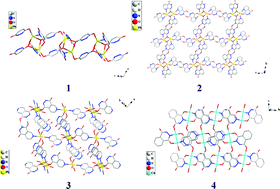Preparation and structural characterization of a series of monoacylhydrazidate-bridged coordination polymers†
Abstract
From the simple

* Corresponding authors
a
College of Chemistry and State Key Laboratory of Inorganic Synthesis and Preparative Chemistry, Jilin University, Changchun, Jilin, China
E-mail:
jiehuiyu@yahoo.com.cn, xjq@mail.jlu.edu.cn
b State Key Laboratory of Coordination Chemistry, Nanjing University, Nanjing, Jiangsu, China
c State Key Laboratory of Theoretical and Computational Chemistry, Institute of Theoretical Chemistry, Jilin University, Changchun, Jilin, China
From the simple

 Please wait while we load your content...
Something went wrong. Try again?
Please wait while we load your content...
Something went wrong. Try again?
J. Yu, Y. Zhu, D. Wu, Y. Yu, Q. Hou and J. Xu, Dalton Trans., 2009, 8248 DOI: 10.1039/B908812A
To request permission to reproduce material from this article, please go to the Copyright Clearance Center request page.
If you are an author contributing to an RSC publication, you do not need to request permission provided correct acknowledgement is given.
If you are the author of this article, you do not need to request permission to reproduce figures and diagrams provided correct acknowledgement is given. If you want to reproduce the whole article in a third-party publication (excluding your thesis/dissertation for which permission is not required) please go to the Copyright Clearance Center request page.
Read more about how to correctly acknowledge RSC content.
 Fetching data from CrossRef.
Fetching data from CrossRef.
This may take some time to load.
Loading related content
